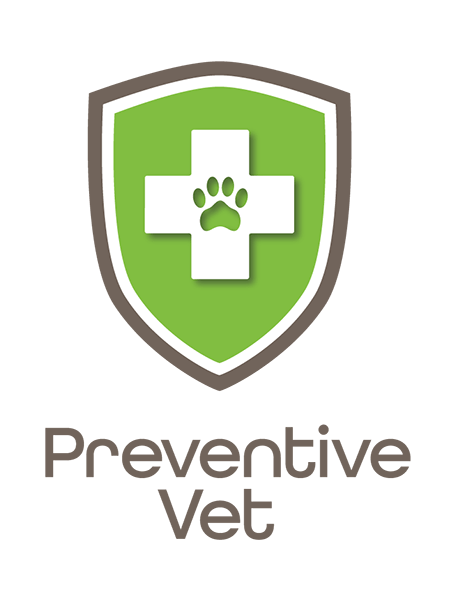- en
Your dog is itching and suffering from skin issues. If it's atopy or food allergies, this information will help you know what to do, how to make your dog more comfortable, and how to prevent this from happening in the future.
Quick Links

Based on a study reported in the Journal of the American Medical Association, there appears to be a benefit to children raised in households with two or more pets. Children exposed to pets in the first year of life seem to be less likely to develop allergic diseases than children raised without pets.
Our mission is to help save dogs' and cats’ lives through our educational content. To support our efforts, this page may contain affiliate links. We earn a commission for qualifying purchases – at no cost to you.
Atopy or allergic dermatitis or inhalant allergies are all terms used to describe the same condition. Essentially, it is an inherited trait that causes your dog’s immune system to overreact to airborne or inhaled allergens. These allergens include molds, pollens, house dust, dust mites, etc. This overreaction causes your dog to be itchy. Therefore, they begin licking, biting, chewing, and scratching at their paws, flanks (sides), ears, armpits, and under their belly. The result of this is hair loss, either patchy or sporadic, as well as thickening of the skin. Depending on the individual dog, their skin can be crusty and dry, or oily. Many dogs also develop ear infections (bacteria and yeast) as a response to the allergy. It seems to usually start as a seasonal itch, with the summer and fall being the worst. The problem may become year-round.
NOTE: Some breeds, such as Dobermans and Dalmatians, develop acral lick granulomas due to intense itching and self-trauma.
Atopy is the second most common allergic skin condition in dogs. The first most common one is flea allergic dermatitis.
Food allergies or the term food hypersensitivity are often used interchangeably in veterinary medical literature. When a pet has food allergies, it means that symptoms arise when a food is ingested that causes an immunologic reaction. Typically, this reaction is to a protein or a complex carbohydrate. Some suspected or confirmed culprits include:
The most common sign seen is non-seasonal itching that does not respond to steroids. The amount and where the itching is about the same as atopy. Meaning your pet will be scratching at their paws, ears, face, and groin. The effects to the skin are papules (raised red bumps), erythema (red skin), swollen and red paws (pododermatitis), oily skin, and ear infections. Some dogs also have gastrointestinal issues. This includes vomiting and diarrhea.
If the itching begins before 6 months of age or after 6 years old, food allergies are more likely than atopy.
Unfortunately, some dogs are hypersensitive to environmental allergens, which can then result in skin issues. Allergens like pollen, mold, dust, etc., bind to mast cells in the skin. These cells then break apart releasing substances, including histamine, that cause itching in the skin. Your pet then reacts to this by licking, biting, chewing, and scratching at different areas of their body. This in turn creates issues with the skin.
Pets that live in milder and temperate environments where there is a longer allergy season and higher pollen count tend to have more issues. Also, those pets that also have additional issues such as food allergies or flea allergic dermatitis have a higher risk factor.
It has been noted that most dogs affected by atopy begin to show signs between 1 and 3 years of age. Both male and female dogs are affected, but there seems to be a higher incidence among females. While any dog, including mixed-breed dogs, can have atopy, it is seen commonly among the following breeds:
Atopy cannot be cured but rather managed. Typically some form of therapy is required for life.
 Food allergies create non-seasonal itching in animals with the ingestion of one or more substances in their diet. While proteins, such as beef, pork, chicken, etc., are the most likely culprit, any food ingredient can cause allergies.
Food allergies create non-seasonal itching in animals with the ingestion of one or more substances in their diet. While proteins, such as beef, pork, chicken, etc., are the most likely culprit, any food ingredient can cause allergies.
Pets with food allergies can have reactions to grain mites in their food. (See the next section for how to prevent this.)
The true incidence of food allergies is unknown, but it is suspected to be in the range of 14 to 33 % of dogs. Pets are typically over 2 years of age when food allergies are first noticed. But it has been seen in dogs less than a year of age. Any breed or mixed breed can be affected, but food allergies are seen more in the following breeds:
With atopy or food allergies, you will need to consult with your veterinarian for a proper diagnosis. They will need a very detailed history about your dog. Some things they may ask about are:
Based on the history, physical exam, and test findings, your veterinarian will make recommendations.
For the management of atopy, your veterinarian will have to consider what treatments are needed for the skin issues that exist as well as how to best manage your pet’s atopy. Some things that may be recommended are:

Once treatment has begun for atopy, it is critical that you have your pet re-evaluated regularly. Initially, you can expect your veterinarian to see your dog every 2 to 8 weeks. This allows them to evaluate the effectiveness of the medications and to be sure there are no drug interactions. Once the itching is managed, you will likely need to have your pet evaluated every 3 to 6 months. Regular blood work will be needed to monitor the effects of the medication on your pet.
Food allergies will require that you put your pet on a STRICT hypoallergenic diet for a minimum of 12 weeks. Your veterinarian will need to prescribe your dog a new diet. You will also have to eliminate treats for a period of time. It is usually recommended that you initially just use the new hypoallergenic diet prescribed to your pet for treats. Remember, love, attention, and toys are better than food with possible allergens.
There are some things to remember with food allergies. There are times where a diet will work for a period of time, but then your dog develops a new allergy to a different ingredient. Therefore the diet will need to be changed again. Novel protein (a protein your dog has never eaten before) and hypoallergenic diets are expensive, but they are cheaper than regularly visiting the vet for skin issues. Lastly, there are times where commercially produced special diets do not work, and your veterinarian will need to refer you to a veterinary nutritionist. The nutritionist will formulate a balanced diet that you may need to prepare for your dog that suits their special needs.
It is important to prevent grain mites in your pet’s diet, as your dog may be sensitive to them. Therefore, when opening a new bag of kibble, divide it into weekly servings and seal it in Ziploc® freezer bags. Store the extra in the freezer and only remove a week serving at a time. This process prevents grain mites from getting into the food.
If your dog has any skin issues as a result of the food allergies, your veterinarian may start your pet on some of the following:
With atopy, you will typically see improvements within a week because multiple treatments are combined to address different issues. This means that your dog will scratch, lick, or bite themselves less frequently. Your dog’s skin will be less red and inflamed. If your pet's skin had an odor, it will lessen or disappear. Your pup, in general, will seem happier.
For pets with food allergies, improvement has been shown as soon as 24 hours but usually takes 3 weeks from starting the new strict diet. Your pet should slowly begin to be less itchy, and there will be a lessening in their licking, biting, chewing, etc. Their skin will look less red and inflamed. Skin lesions will begin to heal. If there is an ear infection, the amount of discharge/debris will be less, and the odor will improve. Gastrointestinal issues will start to lessen over the first few days.

Your dog’s itching will not improve and may actually worsen with either atopy or food allergies. This, in turn, will cause a worsening of their skin infection. Their skin will begin or continue to thicken as well as start to hyperpigment (turn black in color). If an ear infection was not present prior, one might develop. In general, you will not notice any issues lessening, and no healing will be noticeable.
If you do not see improvements, contact your veterinarian. They may need to add or change medications. They may also need to run additional tests.

Once you know what substances, inhaled or ingested, your pet is allergic to; avoidance is the key. Be sure that everyone who handles your dog is aware of their allergies, especially if they have food allergies.
Only in very rare cases does atopy resolve or go away completely. Managing and controlling atopy can be frustrating. Flare-ups are very common. It usually requires some form of treatment(s) for your dog’s entire life once it has been diagnosed. Diligence is the key to successfully managing this issue. The moment you notice itching or skin issues, contact your veterinarian so that they can re-assess your pet.
Be sure to be diligent with environmental control of allergens. Frequent dusting and vacuuming to control dust and dust mites. Placing dust mite covers on pillows, mattresses, and box springs is important. Using sprays to control dust mites can help as well. Using HEPA filters in air conditioning units and air purifiers to cut down on dust and pollen – and making sure they're cleaned or replaced regularly. Keeping windows closed to prevent circulating airborne allergens, especially during "high allergy" season. Control mold with dehumidifiers or by placing activated charcoal on exposed dirt of indoor plants. Several times per week, wash your bedding and your pet’s bedding with hypoallergenic laundry detergent in hot water. Do not use carpet powders or aerosol sprays.
To help prevent flare-ups with food allergies, be sure to only feed the recommended hypoallergenic diet and treats. Never change or add ‘new foods’ without consulting with your veterinarian first. Always read the labels on new treats to be sure they are safe – even if you have used them in the past. Continue any and all the methods of caring for your dog that worked, listed in the "What You Should Do" section above.
Remember, diligence and avoidance are the keys to success!
The Pet InfoRx® is made possible, in part, through our partnership with AlignCare®.


© Preventive Vet. All rights reserved. PreventiveVet.com
